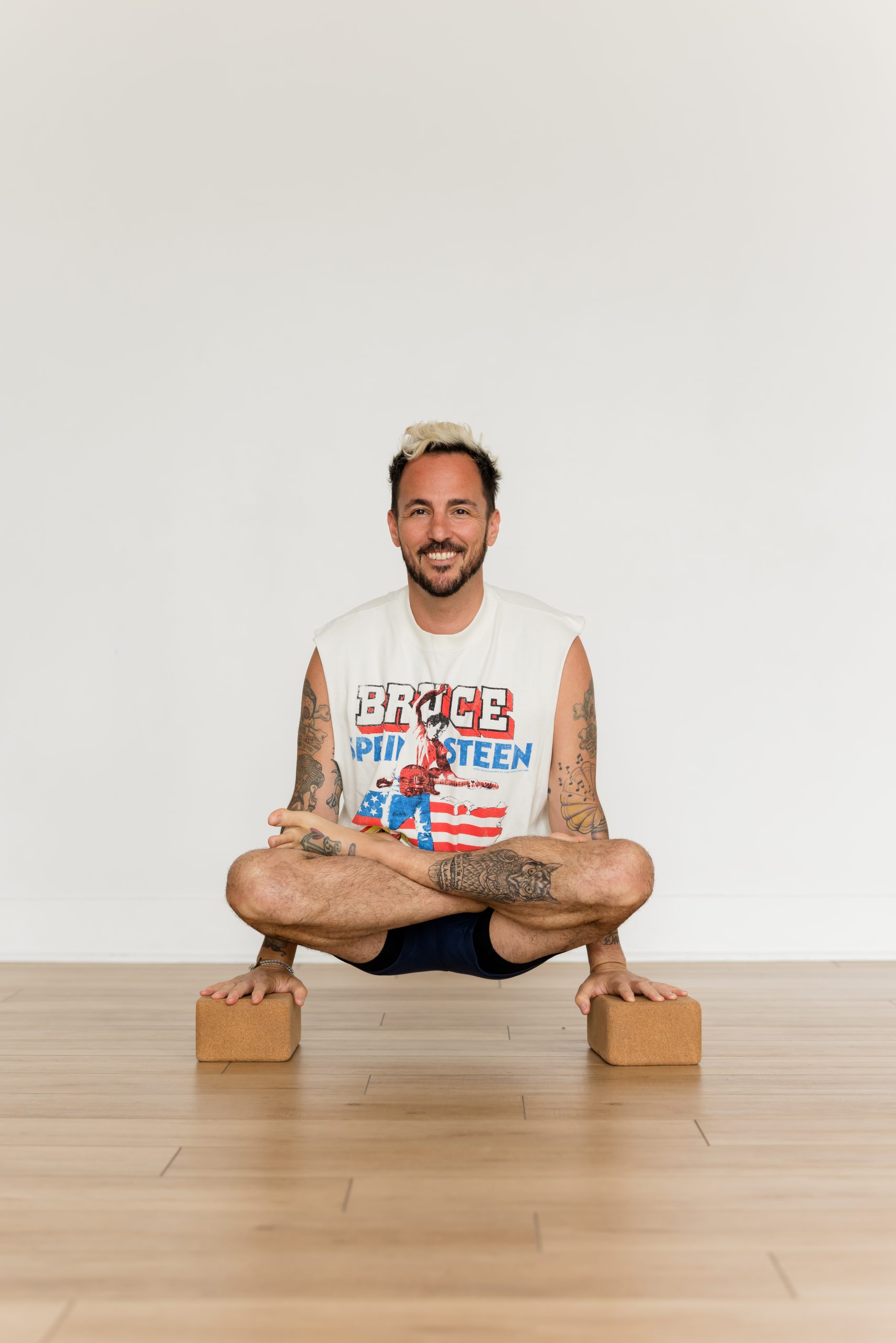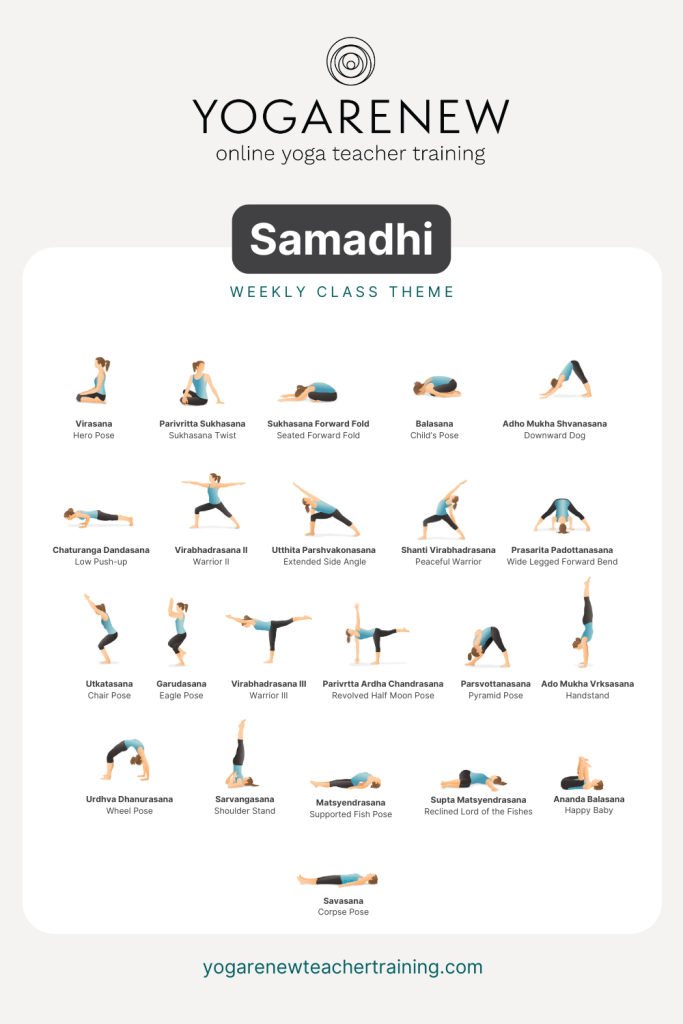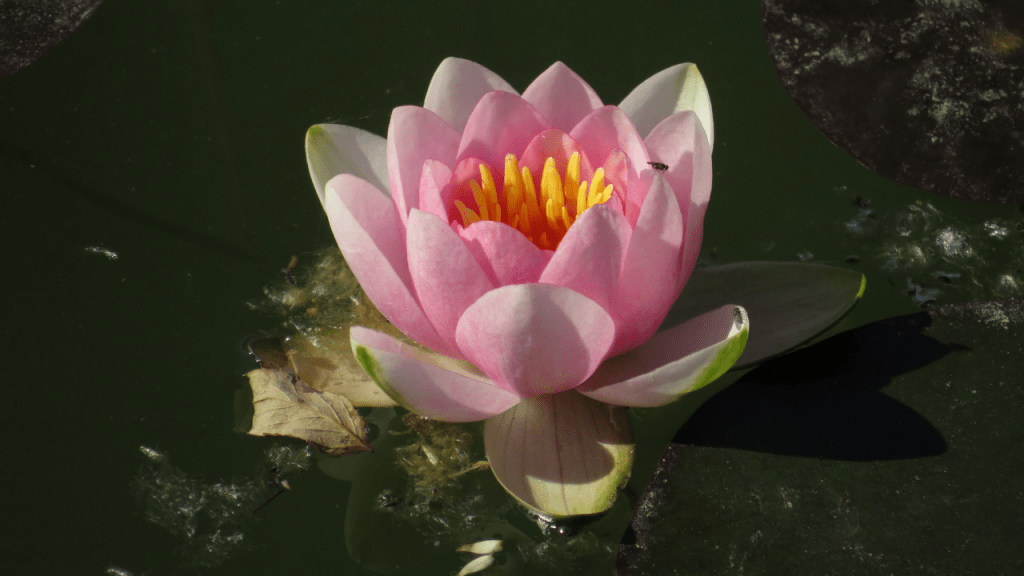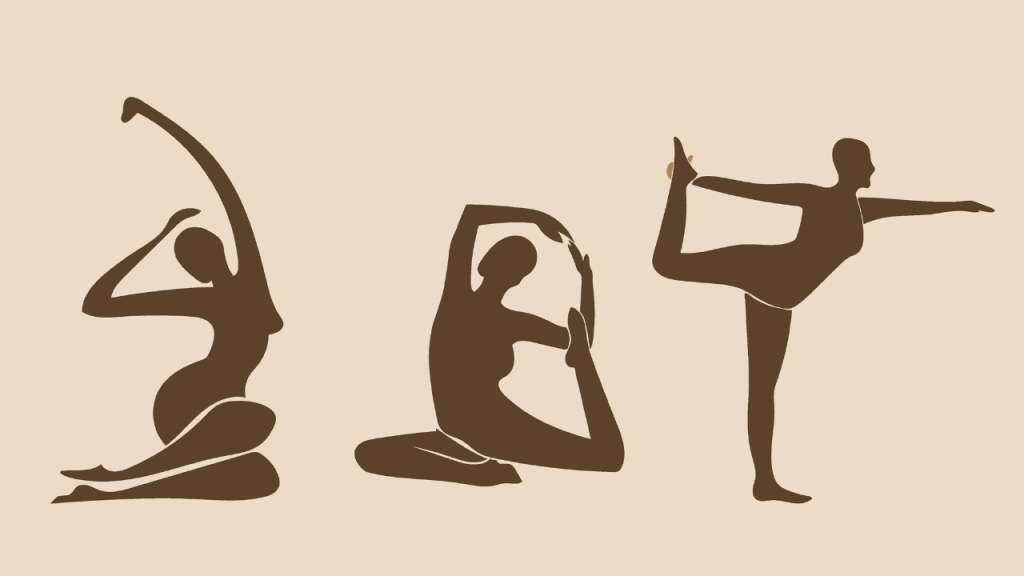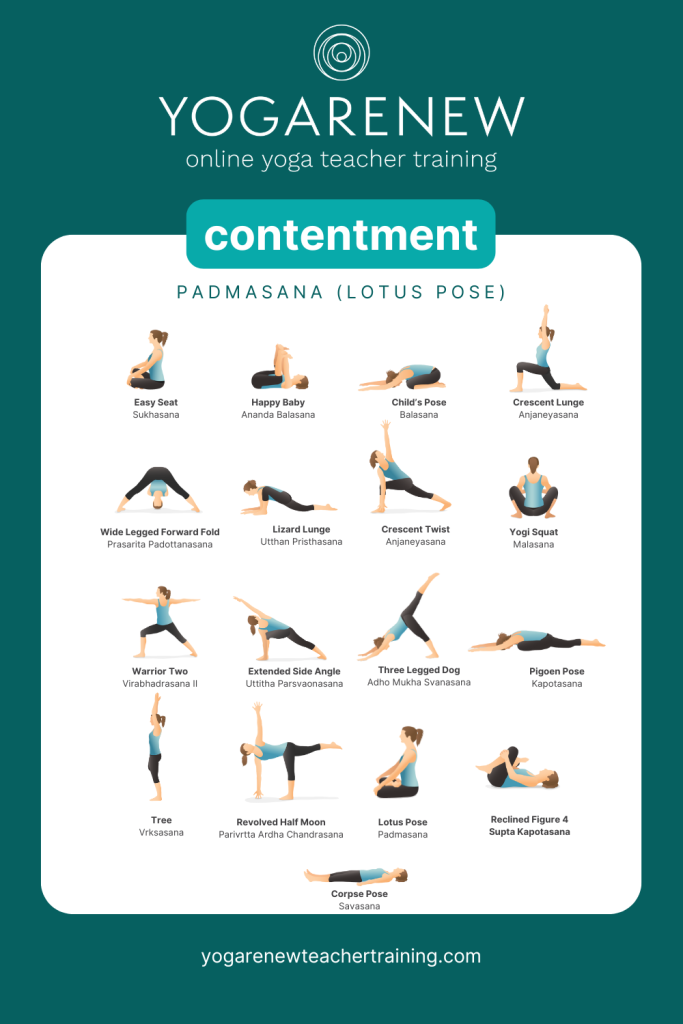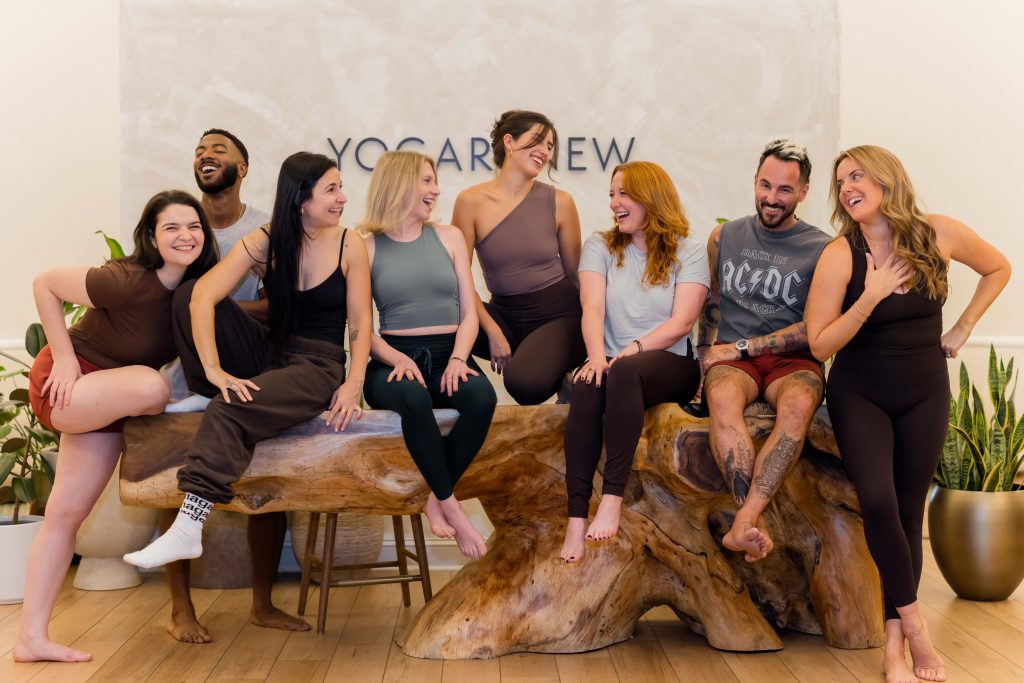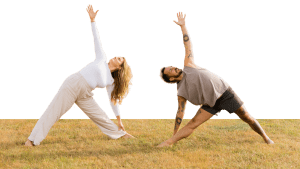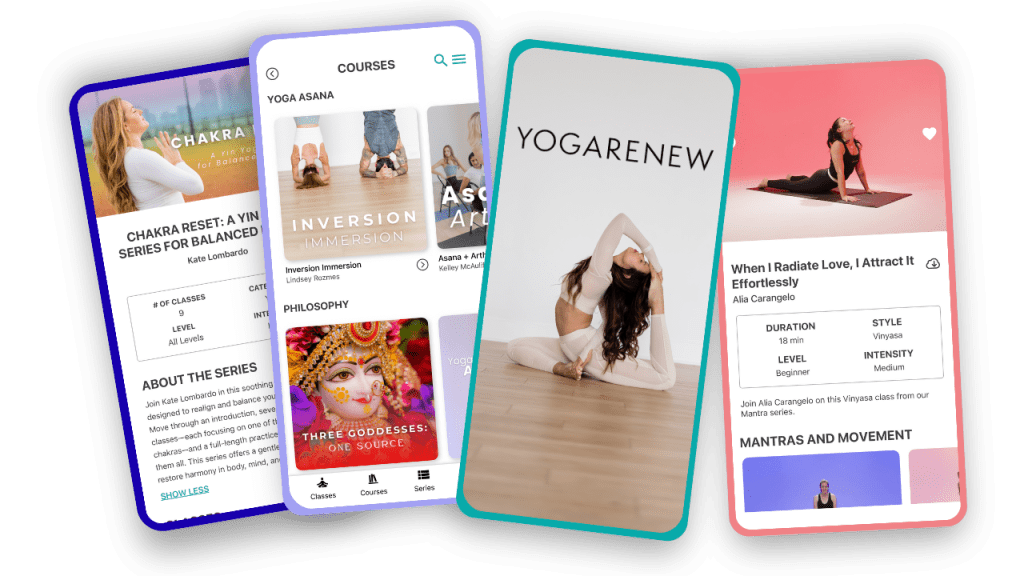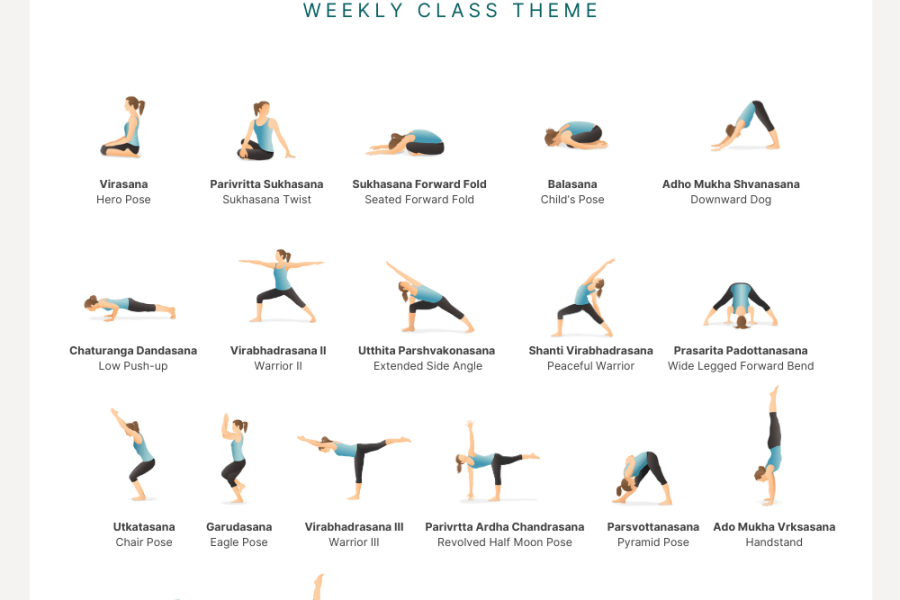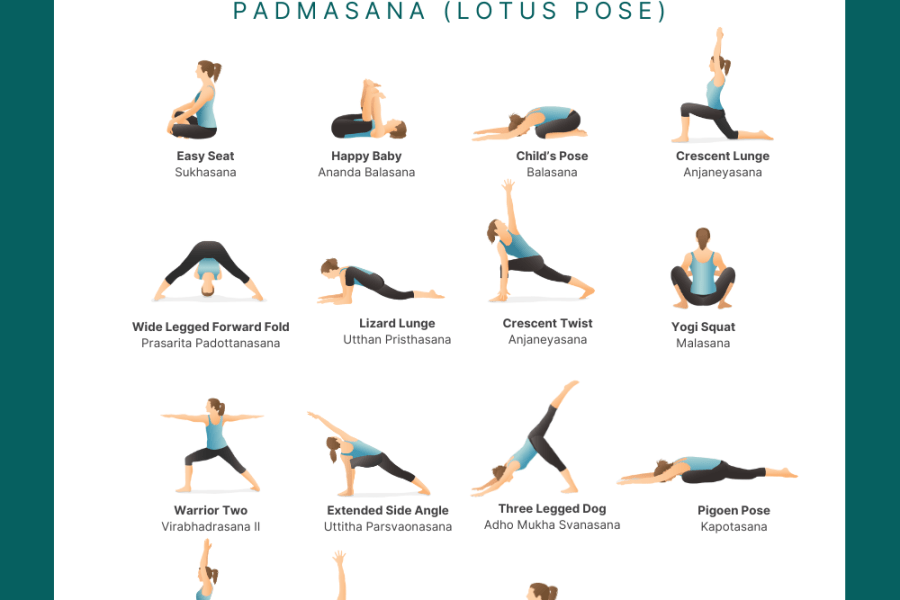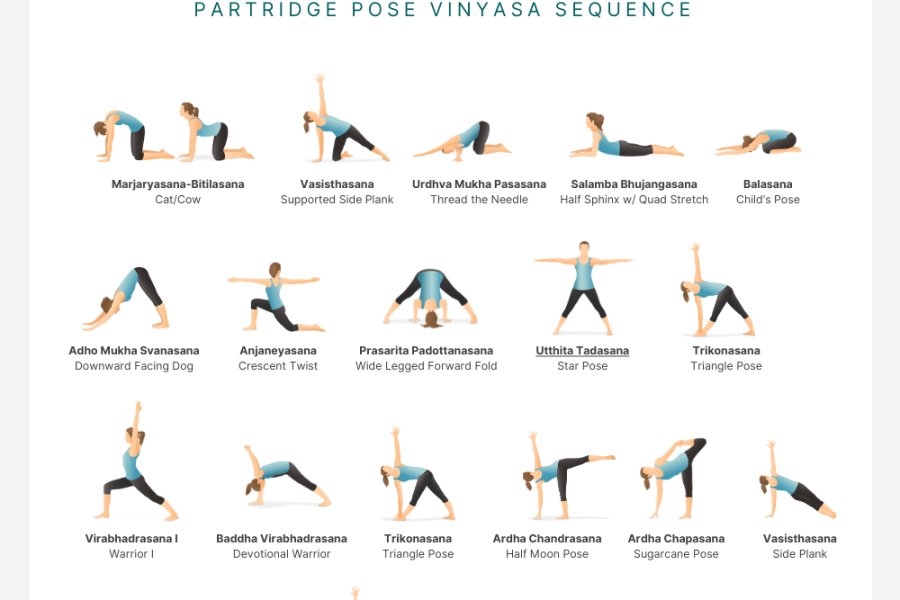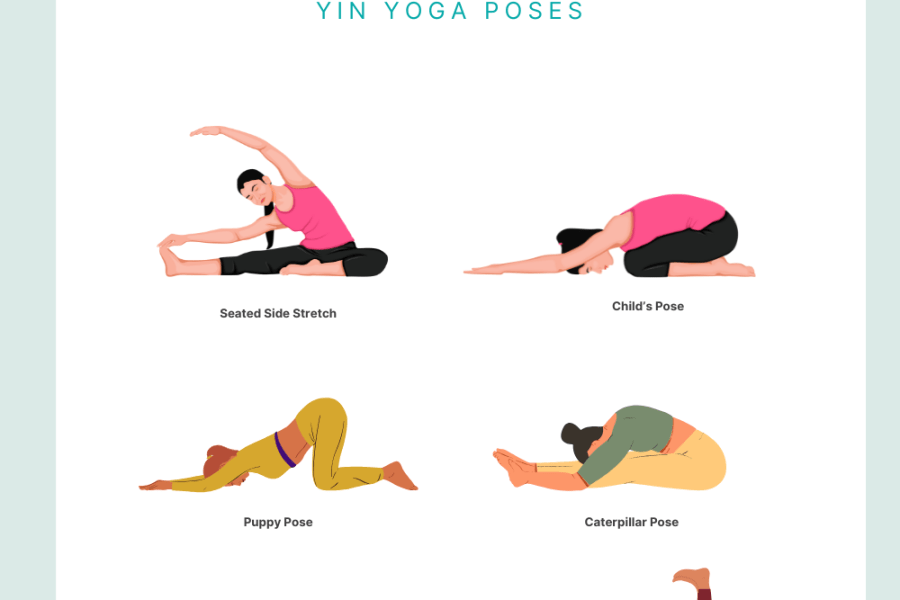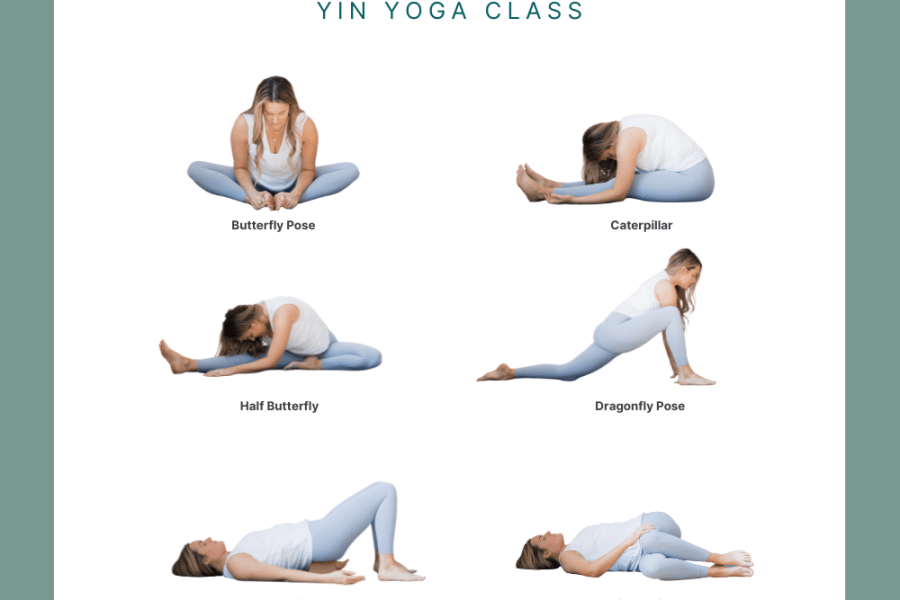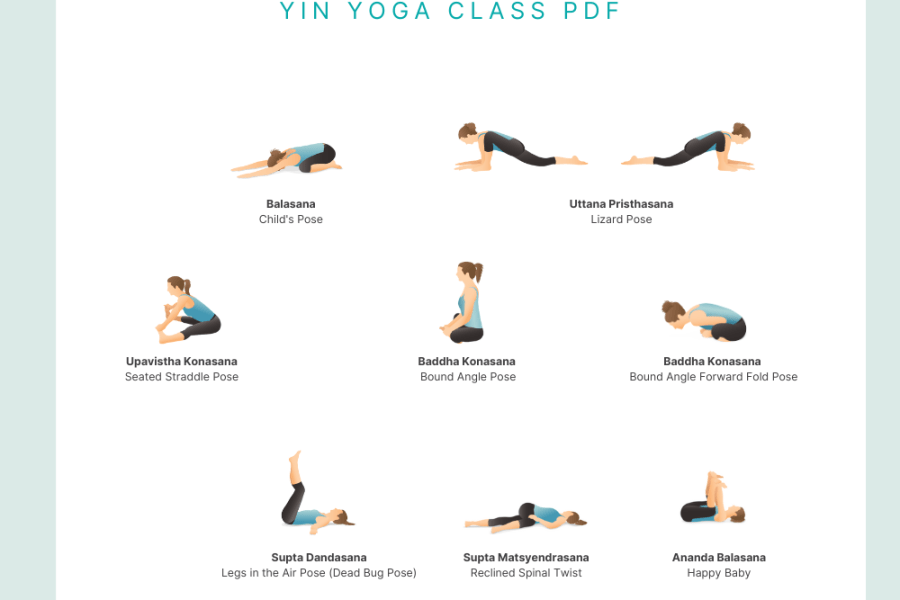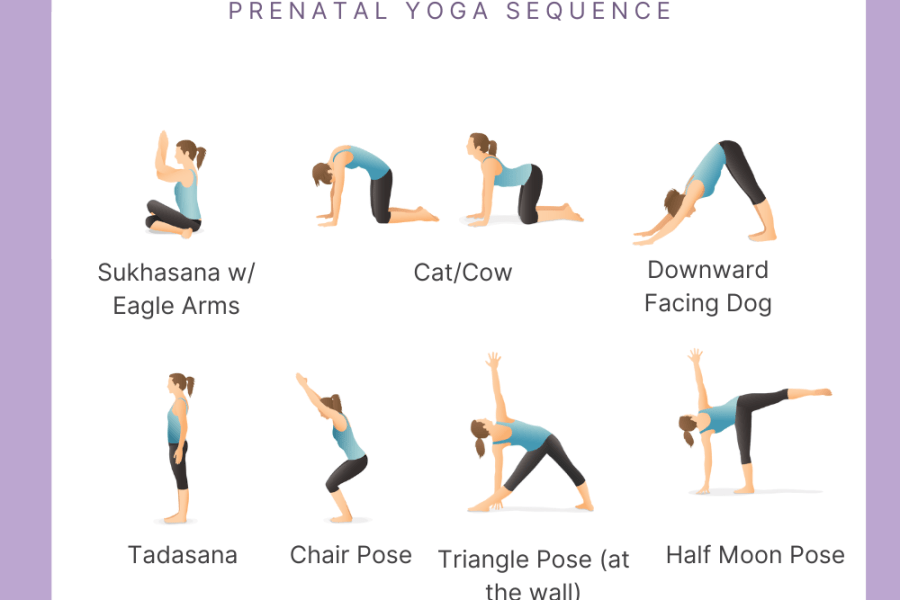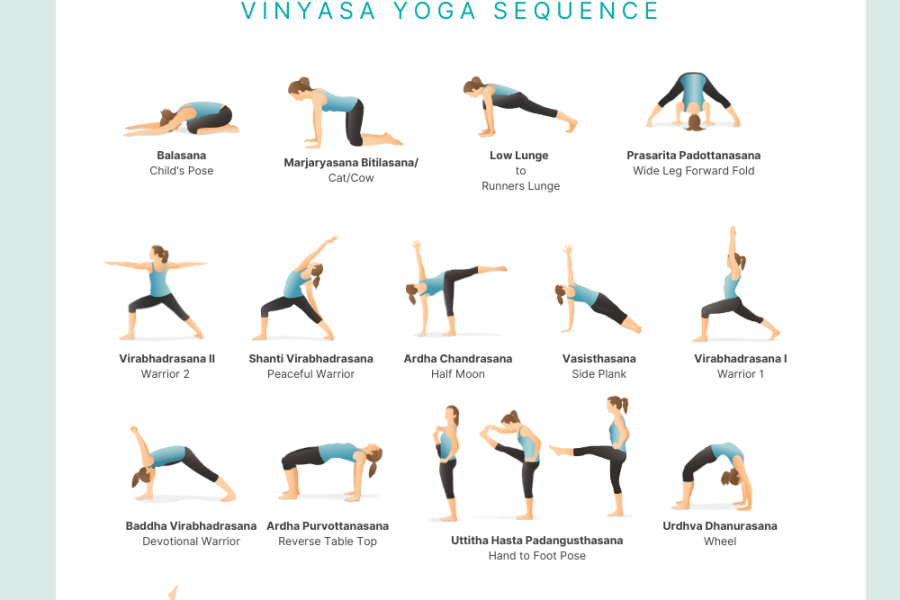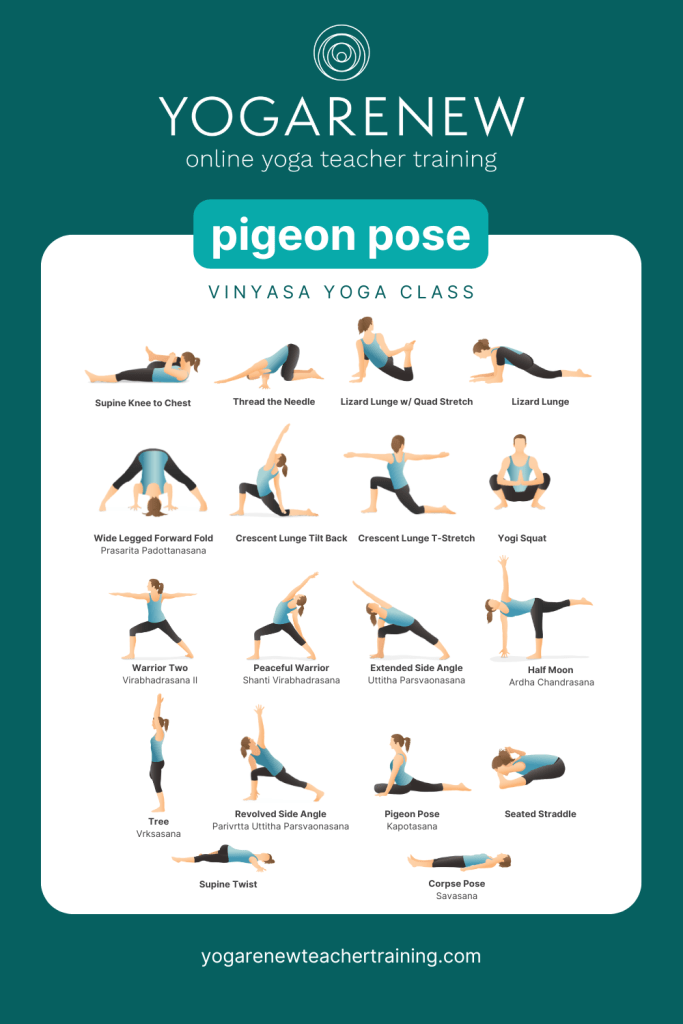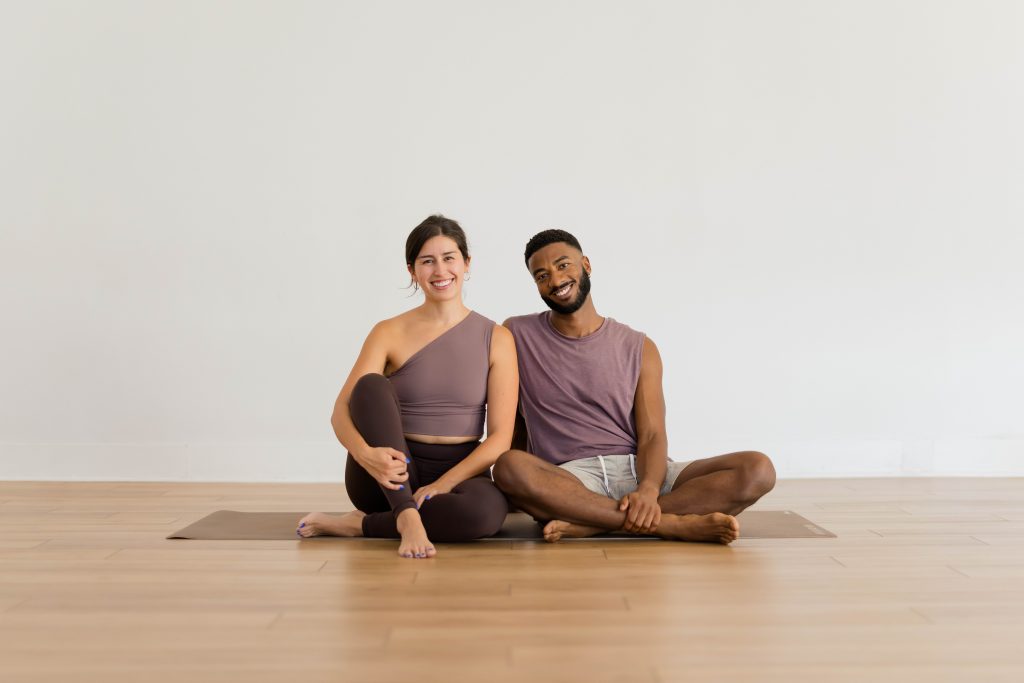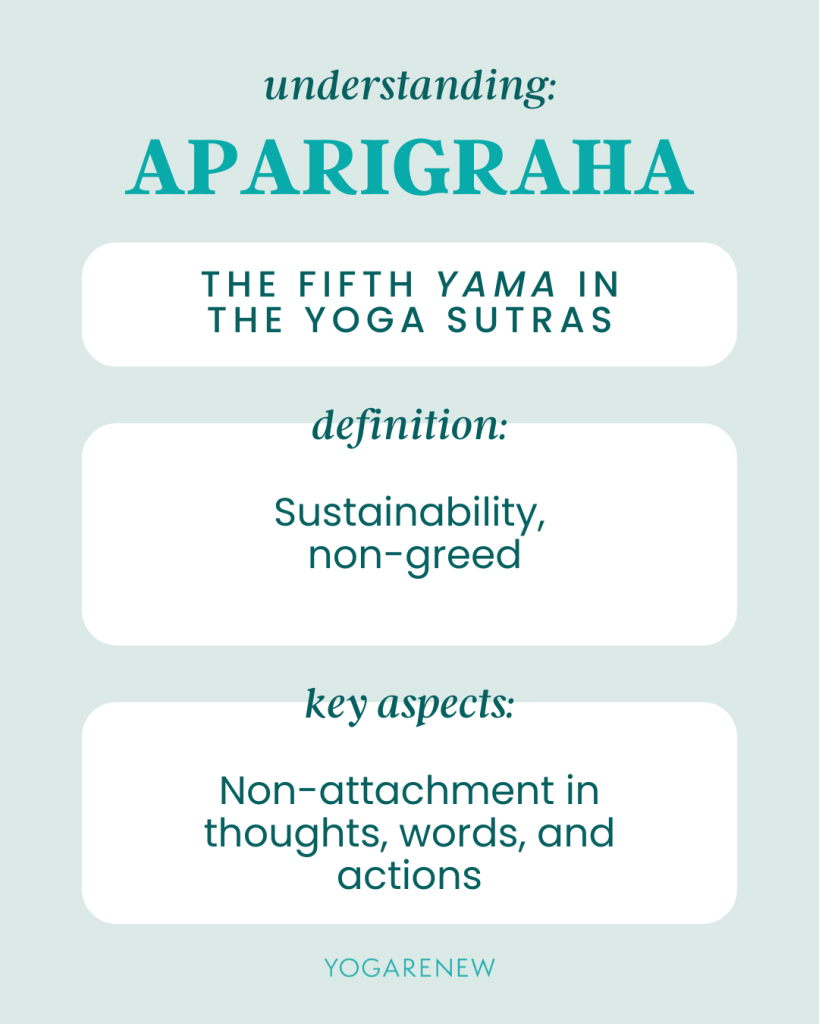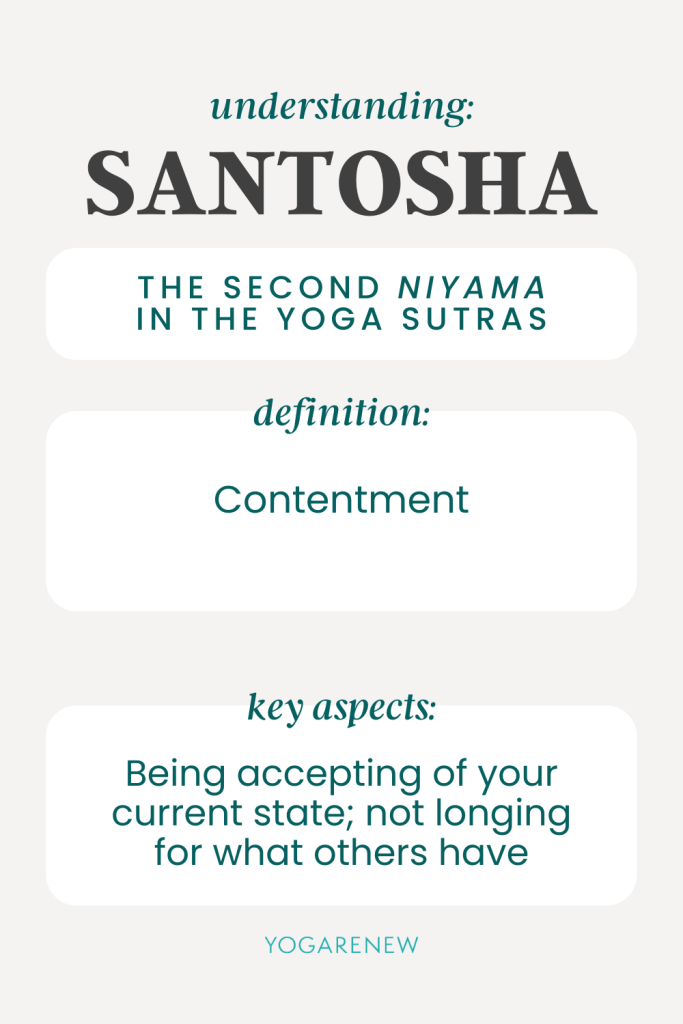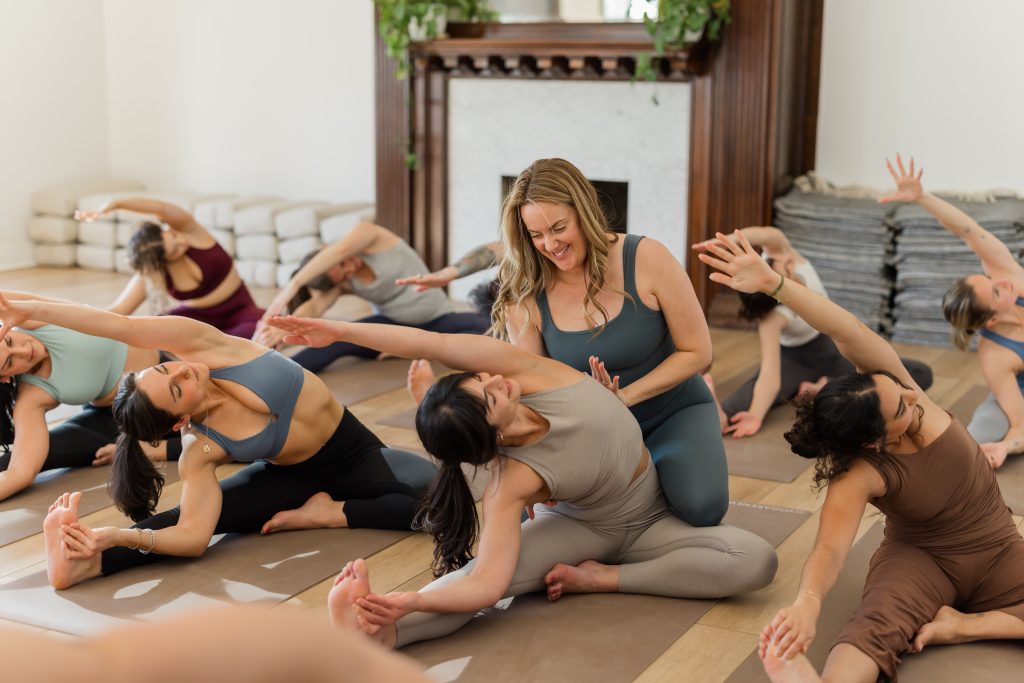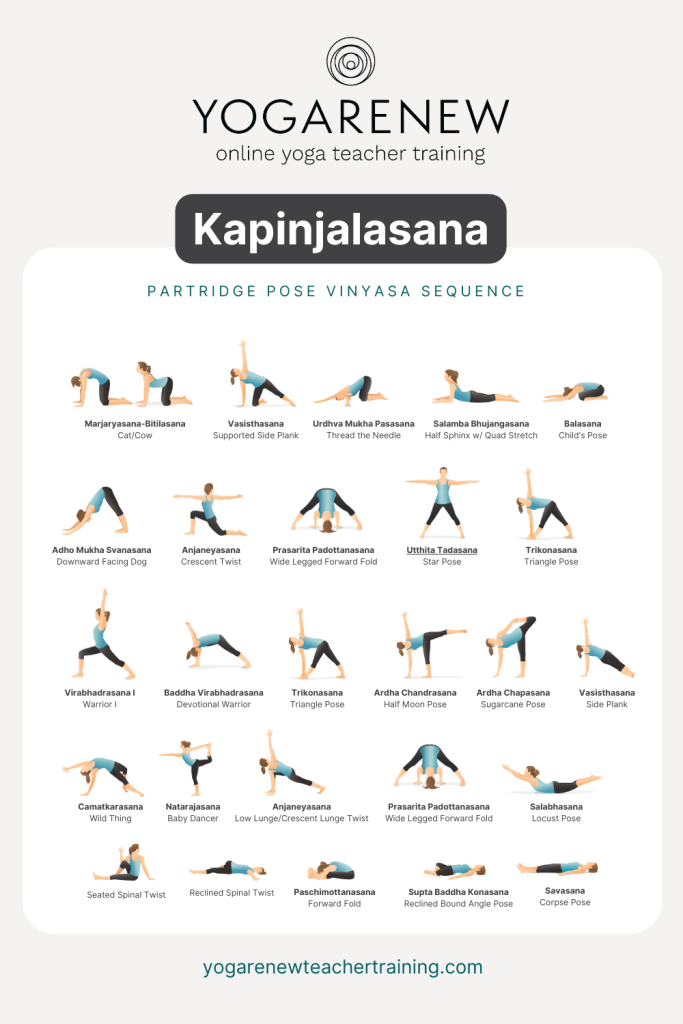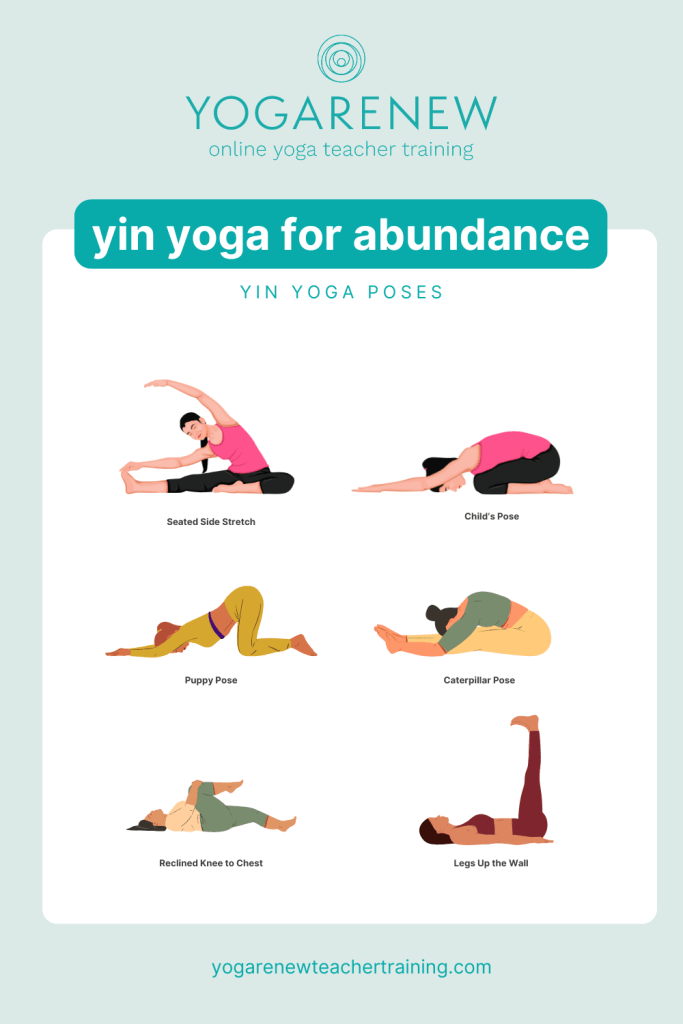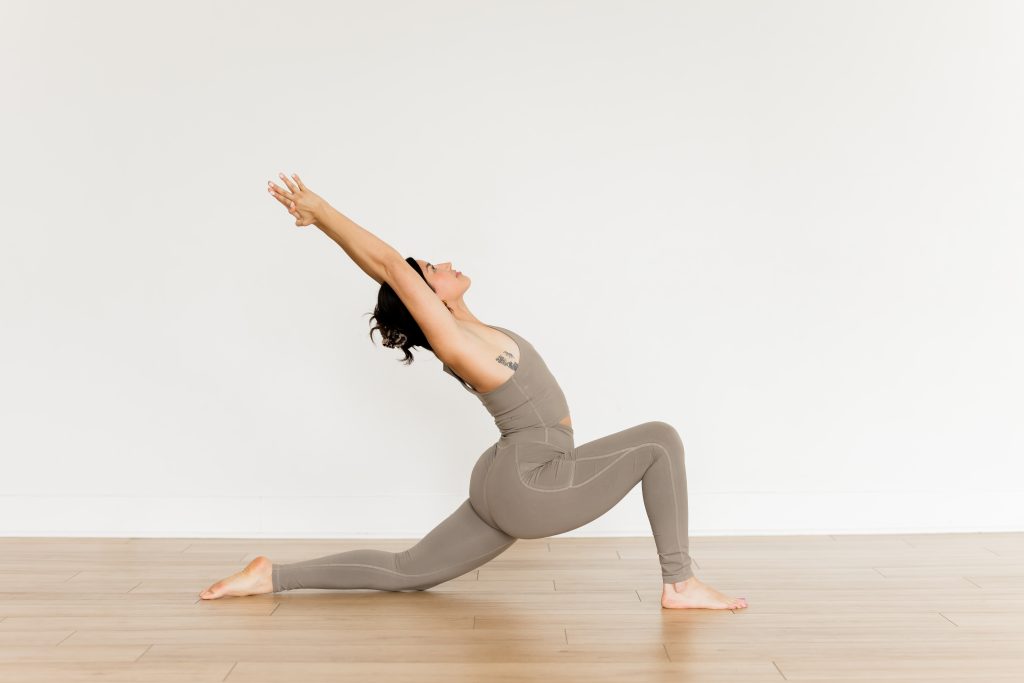
Today's Best Free Yoga Apps For Practicing At Home
We’re pretty fortunate to have a TON of yoga apps available today. It can be a little daunting to find one that aligns with your interests, goals, experience level or tastes. Are you looking for live classes, or beginner guidance? Is there a specific style or intensity level you prefer? Music? Fitness tracking? There’s a lot of options available with different niches or target audiences, but fortunately I’ve outlined all of this and more for you below.
In This Article:
1. Yoga app vs. YouTube?
2. Ranking criteria
3. Full Ranking of the best free yoga apps
4. Reviews of the best free yoga apps
5. Common Questions/FAQ
What's the difference between a yoga app and free yoga classes on YouTube?
With so many online yoga classes available on YouTube, why should you even bother with a free yoga app? While yoga on YouTube is a quick and easy option for somebody looking to get a class in, there’s plenty of reasons why a free yoga app would be preferable. Apps have better functionality for guidance, customization, tracking, navigation and goal-setting. The functionality within yoga apps make it a lot easier to filter and browse options to find the perfect class based on your goal, experience level, duration or interest. You also don’t usually have to deal with ads and will get better music integration than you’d find with YouTube classes.
In this article, I’ll parse through this vast landscape to give you insight on what different apps offer and ultimately a full list of the best free yoga apps.
What should you look for in a yoga app?
Let’s take a look at the criteria we used to rate each app and compile our ultimate list. Each app was ranked across a set of criteria which was converted to a numerical value and ultimately scored out of 45 points.
For example, the criteria “class video quality” was ranked on a scale of 1-5, with 1 being the lowest and 5 being the highest. Apps that scored a ‘1’ for this criteria just had animations or a timed sequence of poses, while apps that scored a ‘5’ had high definition video and settings to control things like the music volume separate from the instructor’s voice.
Here is the scoring criteria used to rate the best yoga app:
- How Many Free Classes Are Available?
- What’s The App Store Ranking?
- Are There Live Classes?
- How Is The Class Video Quality?
- Is There Goal-Oriented Content?
- Are There Custom Filtering Options?
- Are There Specific Programs Focused on Beginners?
- Do Classes Have Music & Customization?
- Is There a Library Of Yoga Pose Tutorials?
- Are There Focused Educational Courses?
- Does The App Have Fitness Tracking/Apple Health Or Google Fit Integration?
- Are There Ads In The Free Version?
Let’s quickly look at this criteria in more detail and some considerations for ranking the top apps. Or you can scroll on down below to check out our full list of the 20 best free yoga memberships.
Free Yoga Membership App Options
What are you actually getting for free? Some yoga apps are simply free to download but require a paid membership to take classes. Others have ads with their classes or have free previews but don’t allow you to view a full class until you subscribe. Some yoga apps allow you to take 1 or two classes for free, and others have hundreds of free classes. This seems like important information, so we’ll definitely highlight what each yoga app provides for free in addition to what you get with a paid subscription.
This criteria was worth 1-3 points in our score.
Reviews & Ratings
One big consideration we’ll look at is social proof. What are the app’s users saying? Has the app received any notable press or accolades from reputable thought-leaders or publications? Outside of comparing functionality and content options, this is the most direct way to measure an app’s ranking because it draws from a diverse range of opinions and experiences.
Since all of the apps reviewed had at least a 4 rating in the US app store, we looked at the decimal place to get a more meaningful calculation. For instance, a 4.9 rating was given a score of ‘9’ in the ranking calculation.
Does The Yoga App Have Goal-Oriented Practices Or Functionality?
Many yoga apps will design content or functionality around goals like weight loss, flexibility, or stress relief. Other apps simply provide classes without highlighting a specific outcome. If you have a particular goal in mind, this is an important consideration. For example, apps that are strictly focused on weight loss might have functionality for counting calories or tracking progress around that goal which could be helpful.
This criteria was worth 1-3 points in our score.
Can I Customize My Practice With This Yoga App?
Yoga has a diverse landscape of formats with different intensity levels, frameworks, and desired outcomes. It can be tough to find what you’re looking for if there’s a lot of content and you have something specific in mind. In order to easily find a class, you’ll want to be able to apply multiple filters to customize results based on your interest. For example if you only have 30 minutes and you want to find a quick Vinyasa class designed for beginners, can you do that? Or do you need to browse through a massive library to find that class.
Some of the things to consider in terms of content & customization:
- Can I customize my practice based on experience level, styles, formats or outcomes?
- Does this app have different instructors with unique areas of expertise, or just one instructor?
- Can you customize the class duration based on your availability or does this app target a niche with shorter classes?
- Is there any additional content included within the app that’s not typically found elsewhere?
This criteria was worth 1-3 points in our score.
Does This Yoga App Have Health & Fitness Tracking Available?
The rise of fitness tracking has been swift and pervasive. You don’t need to have a wearable fitness tracker to take advantage of this either. Apple Health and Google Fit integrate directly with a lot of apps and offer some cool functionality without needing a wearable device. Even if you’re just starting out and don’t plan on using this functionality today, it’s nice to know where it’s available in case you adopt it down the road as your practice gains momentum.
This criteria was worth 1-3 points in our score.
Does This App Have Live Online Yoga Classes?
I know a lot of people that find it easier to commit to an online practice when there are live classes held at a specific time. There’s something special about joining a live yoga class and taking part in a shared community experience. For many, it’s a motivational factor and a key requirement in their search for online yoga classes.
This criteria was worth 1-3 points in our score.
Are There Beginner-Friendly Yoga Programs or Guidance?
If you’re just getting started on your yoga practice, this one is key. For true beginners, you’ll want an app that goes beyond simply providing beginner level classes. Look for an app that includes elements of educational content that can help you get started on your journey. You can learn a lot in beginner level classes, but having supplemental learning content can make a big difference. As example of this could be something as simple as having a set of tutorials to learn different yoga poses.
This criteria was worth 1-3 points in our score.
Pose Tutorials & Guidance
Whether you’re a beginner looking to learn the basics of each yoga pose, or a more experienced yogi looking to fine tune your practice, having a set of pose tutorials can be a really valuable piece of functionality. Many apps provide a dedicated area to learn yoga poses, so we’ll highlight this when applicable.
This criteria was worth 1-3 points in our score.
App Navigation & Interface
One thing I’ve seen quite often in user reviews is complaints around an app’s navigation or functionality. It doesn’t matter how great the content is within the app if you’re unable to use it properly. A big element of this comes down to having simple filters or functionality to customize your practice.
Does This App Have Ads?
This one is pretty straight forward. Ads can be a big pet peeve for a lot of people so it’ll be good to know up front which apps have ads in exchange for their free content.
This criteria was worth 1-2 points in our score.
Intermediate or Advanced Classes?
It’s good to know which apps cater to beginners, but another question we should ask is whether this is an app we can grow with? Beginners may eventually grow into more demanding, or intensive classes and want an app that can grow along with them. We’ll take a look at where these options are within different apps as well.
Music & Music Customization
For some people, music is a nonnegotiable aspect of attending a yoga or fitness class and enhances the overall experience. For others, music is a distraction and they’d rather tune into the instructor’s voice without any interference. Some apps allow users to change the music volume separate from the instructor’s voice which is a pretty awesome piece of functionality that caters to both of these audiences. Music licensing can be expensive and complicated, so some apps avoid music entirely.
This criteria was worth 1-3 points in our score.
Educational Programs
Yoga Apps are typically centered around physical classes, but structured educational programs like courses, workshops and lectures can provide incredible value. These could include self-improvement courses, programs designed around philosophy, anatomy, motivation, nutrition, or other areas of wellness. Or they could simply be courses that are more lecture oriented than experiential physical practices. Since yoga is a vast modality that goes beyond the physical practice, this would be key to consider when looking at an app that capture’s yoga holistically.
This criteria was worth 1-5 points in our score, accommodating a wide range of educational programs, interfaces, and content types.
Best Free Yoga Apps: Overview
Below you’ll find a summary ranking of the best yoga apps with some key criteria highlighted. We looked at areas beyond what’s included in this chart, so keep scrolling to get a full breakdown at what these apps offer and how they compare with one another. You’ll find detailed reviews covering all our ranking criteria and insight on content, quality and functionality.

Full Ranking of The Best Free Yoga Apps
#1. YogaRenew
App Store Rating: 4.9
Rating Score: 45 out of 45
The Best Free Yoga App Overall
Download on IOS | Download on Android
Overview
What’s the best free yoga app? With hundreds of free classes and tutorials, plus live classes and online courses, YogaRenew is the best yoga app available today. This beginner-friendly app has a 4.9 rating in the App Store and has been highlighted as the ‘Best App For Yoga’ in Women’s Health, and ‘Best Online Yoga Classes’ by Rolling Stone magazine. There’s a wide selection of instructors with international recognition who are regularly featured in publications like Yoga Journal, Well+Good, SHAPE, Forbes, Motherly and Bustle. So you know you’re in good hands in terms of the class quality.
Users with a free membership gain access to hundreds of yoga classes + pose tutorials with no ads and music you can control separate from the instructor’s voice. Or you can subscribe to access vast on-demand content, daily live classes & special live events like workshops or lectures.
One of the most special features and differentiators of this app however is the stellar educational programs. These self-paced courses explore areas like philosophy, meditation, anatomy, self-improvement, social health, goal-setting, ayurveda and asana. YogaRenew is the leader in online yoga teacher training, but there’s courses in there for anybody – whether you’re a seasoned yoga teacher or total newbie.
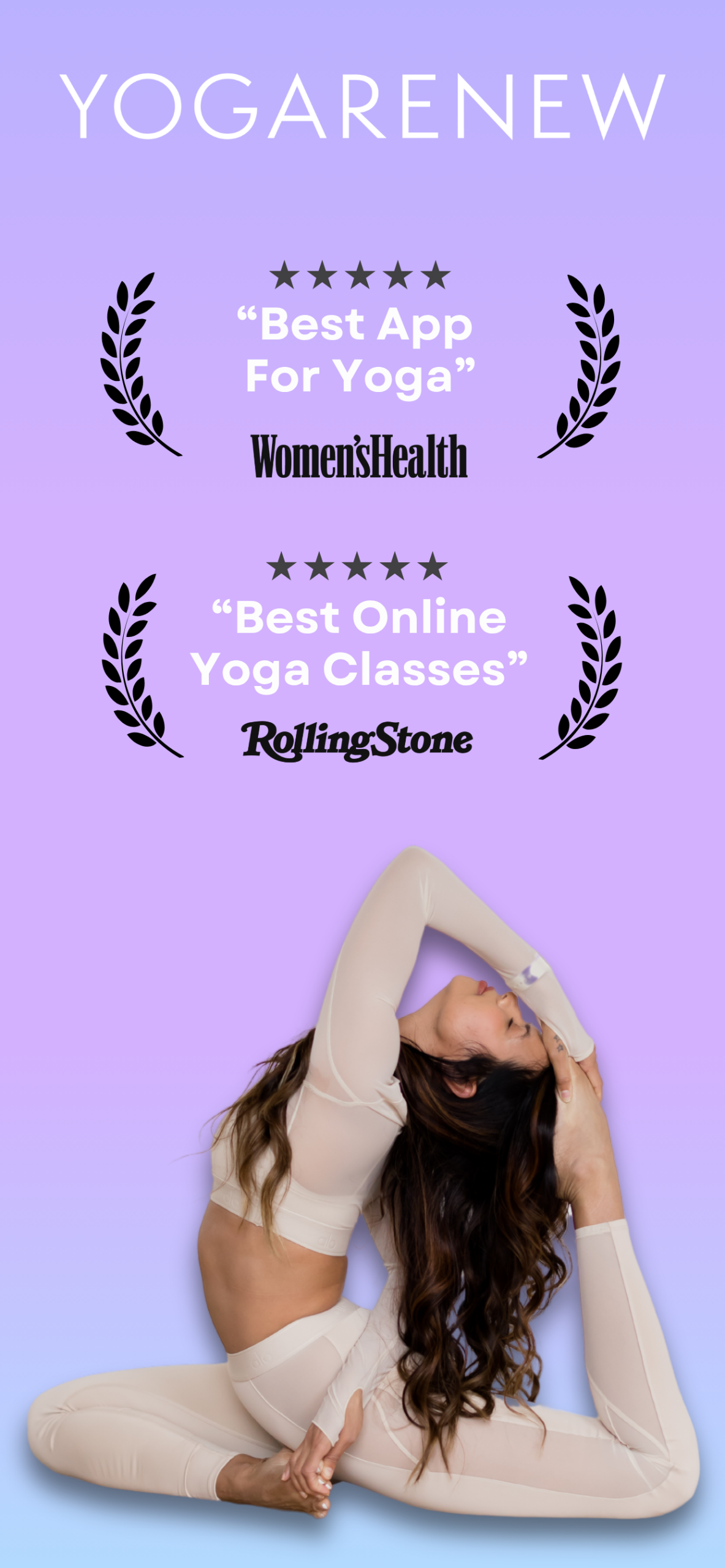
The YogaRenew app is great for beginners with structured guidance & learning programs, free pose tutorials and a ton of beginner level classes. There’s also a ton of intermediate and advanced level classes available for you to grow into over time. As your practice progresses, you’re able to stay within one app to fulfill changing needs or desires.
Within the app, you can easily customize your practice based on specific objectives with series built around goals like hip mobility, sleep or strength building. You can also customize classes based on criteria like class duration, experience level, or style. The app goes beyond yoga and has a ton of different class formats to choose from including Meditation, Breathwork, Sculpt, Vinyasa, Yin, Restorative, Prenatal, Chair Yoga and more.
As far as we’re concerned, there’s nothing that comes close to the scope and quality of content that the YogaRenew app provides. Whether you’re looking to access a ton of classes and tutorials with a free membership or looking for live events and more with a paid membership – this is your one stop shop for the best of the best.
Free Content: Over 200 classes & pose tutorials available for free
Live Classes: Yes, Daily
Beginner Programs & Guidance: Yes
Music: Classes have music, and you can adjust the volume of the music separate from the instructor’s voice.
Class Customization/Filtering: Yes
Fitness Tracking: Yes
Goal-Oriented Content: Yes
Pose Tutorials: Yes
Educational Programs: Yes
Ads: No Ads.
#2. Glo
App Store Ranking: 4.9
Rating Score: 40 out of 45
Best Yoga App for Live Classes
Overview
Glo is one of the most popular yoga apps, and for good reason! It has world renown instructors and a really clean interface with great filtering options. It has been around for quite a long time and has been featured in SELF, PopSugar and Rolling Stone magazine. There’s a lot of diverse yoga content as well with tons of styles or formats to choose from, as well as podcasts and educational content. It would be great if there was more educational content that came with course notes or resources but the limited lectures available are wonderful.
Aside from having a great interface, and a wonderful selection of content – the quality of instructors and wide selection of live classes really helps it stand out. There’s on-demand classes from over 50 instructors with heavy hitters like Jason Crandell, Amy Ippoliti or Tiffany Cruikshank.
While the app is free to download you need a subscription to really use it. There are free previews available within the app, but you’ll need a subscription to access an entire class unfortunately.
Free Content: Free download, no free classes (preview only)
Live Classes: Yes, daily
Beginner Programs & Guidance: Yes
Music: Classes have music, and you can adjust the volume of the music separate from the instructor’s voice.
Class Customization/Filtering: Yes
Fitness Tracking: Yes
Goal-Oriented Content: Yes
Pose Tutorials: Yes
Educational Programs: Limited structured lectures.
Ads: No ads
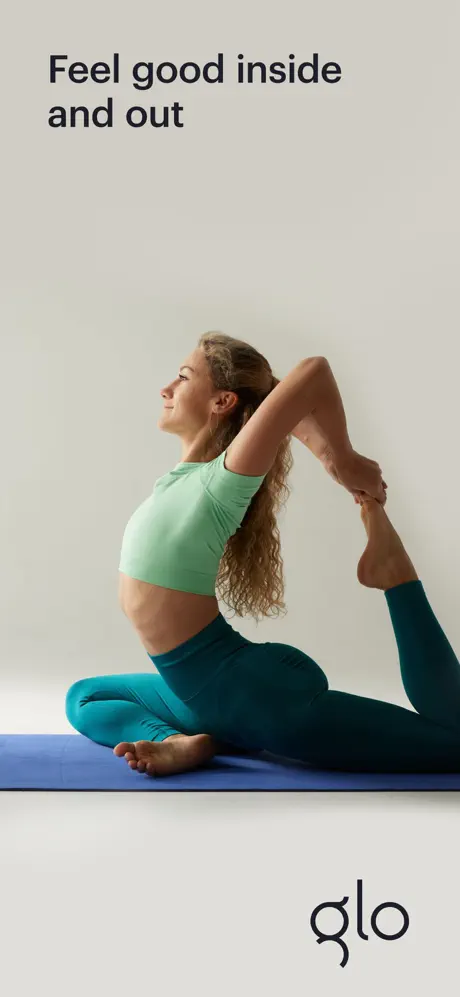
#3. Alo Wellness Club
App Store Ranking: 4.9
Rating Score: 38 out of 45
Best Yoga App For Stunning Backgrounds
Overview
Taking the number 3 spot in our ranking for the best yoga apps is Alo Wellness Club (previously Alo Moves). What started as a clothing company has transformed into a fitness empire. One of the great things about this app is their destination shoots, with classes filmed against beautiful scenery.
Alo has received a ton of press over the years and has a lot of recognition build on the back of its clothing empire. But don’t be too quick to shout out product nepotism – the app stacks up on its own. There are some great filtering options with a wide range of content options. The app isn’t solely focused on yoga, so you’ll see other wellness related modalities in there which can be a bit limiting in terms of interface navigation. The target audience is going to be more fitness oriented than those looking into the more spiritual elements of yoga. It doesn’t appear to be available on Android at the moment either.
Free Content: Free download, no free classes
Live Classes: No
Beginner Programs & Guidance: Yes
Music: Classes have music, and you can adjust the volume of the music separate from the instructor’s voice.
Class Customization/Filtering: Yes
Fitness Tracking: Yes
Goal-Oriented Content: Yes
Pose Tutorials: Yes
Educational Programs: Some wellness lectures, no structured educational courses.
Ads: No ads

#4. Obe Fitness
App Store Ranking: 4.8
Rating Score: 35 out of 45
Best Yoga App For Women
Overview
Scoring 35 out of 45, Obe Fitness ranks number 4 on our list of the best free yoga apps. Obe is targeted towards women’s fitness, and while yoga isn’t front and center within the app there’s still a lot of great content options. I love the bright look of the interface. It’s color galore, and I’m here for it. In addition to a wide range of content and programs, this app has some good insights and goal setting. There’s functionality for health, mood and cycle tracking in there as well. While there are some good educational programs in there, they don’t have anything specifically focused on yoga and they’re largely comprised of articles with some audio recordings sprinkled in.
Free Content: 3 Free Classes
Live Classes: No
Beginner Programs & Guidance: Yes
Music: Classes have music but no option to customize the music volume separate from the instructor’s voice.
Class Customization/Filtering: Yes
Fitness Tracking: Yes
Goal-Oriented Content: Yes
Pose Tutorials: No dedicated pose library
Educational Programs: Limited – mostly articles
Ads: No ads
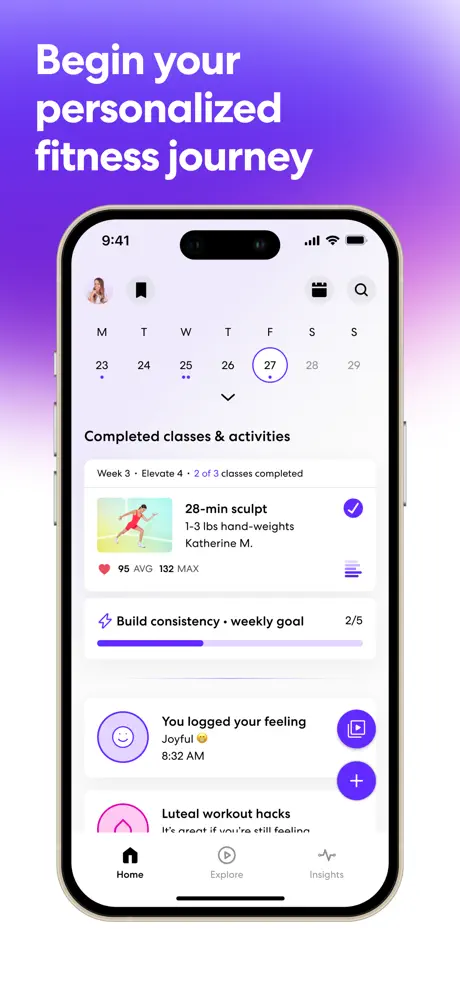
#5. Yoga Anytime
App Store Ranking: 4.9
Rating Score: 34 out of 45
Best Yoga App For Shows
Overview
Yoga Anytime has a wide range of yoga and meditation videos to stream or download. Included within the app are ‘shows’ that are essentially collections of videos around different themes or practices. Some are goal-oriented classes, while others are purely educational. I love how many options there are in terms of their ‘shows’ which cover areas like Ayurveda, Anatomy, Chakras, and Yoga Philosophy. It’s a well-rounded app with lots of great content options. There’s a lot of great content, I wish it was organized into categories to make it a little easier to navigate and find different things.
Free Content: Download only
Live Classes: No
Beginner Programs & Guidance: Yes
Music: Music, but no options to adjust the volume separate from the instructor’s voice.
Class Customization/Filtering: Yes
Fitness Tracking: No
Goal-Oriented Content: Yes
Pose Tutorials: No
Educational Programs: Educational programs available
Ads: No Ads
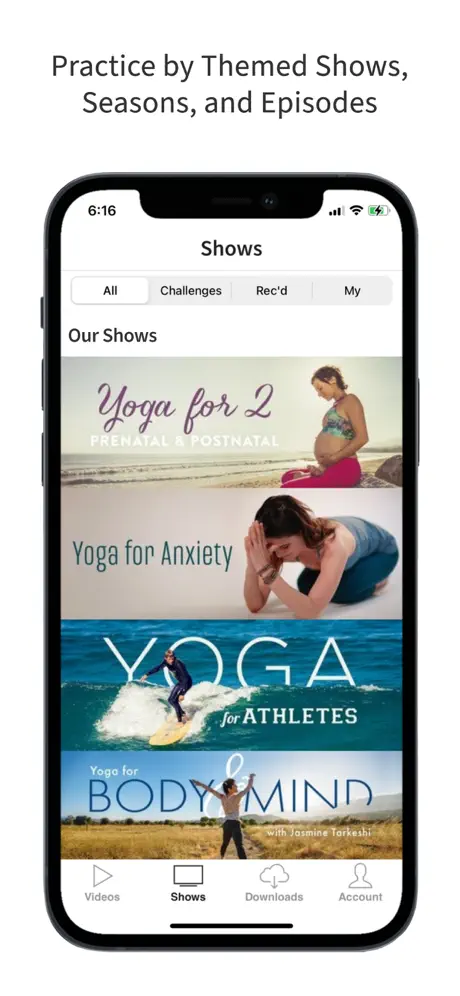
#6. Yoga International
App Store Ranking: 4.6
Rating Score: 34 out of 45
Best Yoga App For Advanced Yogis
Overview
Yoga International has been a leader in the digital yoga space for a long time. They were acquired by Gaia recently, so they’re part of a larger organization with good funding behind them. There’s a ton of well known instructors like Leslie Kaminoff, Rodnee Yee or Amy Ippoliti and great programs. They’re known as one of the places to go to for yoga education and one of the things that makes this yoga app really wonderful is their courses and workshops which cover different aspects of yoga’s practice and philosophy. A lot of the content is geared towards yoga instructors, so it’s a great app for advanced yogis looking to deepen their practice.
In addition to the courses included within their subscription, there’s premium courses which can be purchased as well. Classes have reliably great instructors and guidance, and a lot of diversity. The app is solely focused on yoga and has avoided widening their offering into other modalities like so many other apps have. This gives them a dense niche to master in the space.
Free Content: Free download only
Live Classes: No
Beginner Programs & Guidance: Yes
Music: No customization for music
Class Customization/Filtering: Yes
Fitness Tracking: Yes
Goal-Oriented Content: Yes
Pose Tutorials: Surprisingly couldn’t find a dedicated area within the app for a pose library
Educational Programs: Yes – tons of great courses and learning programs.
Ads: No Ads
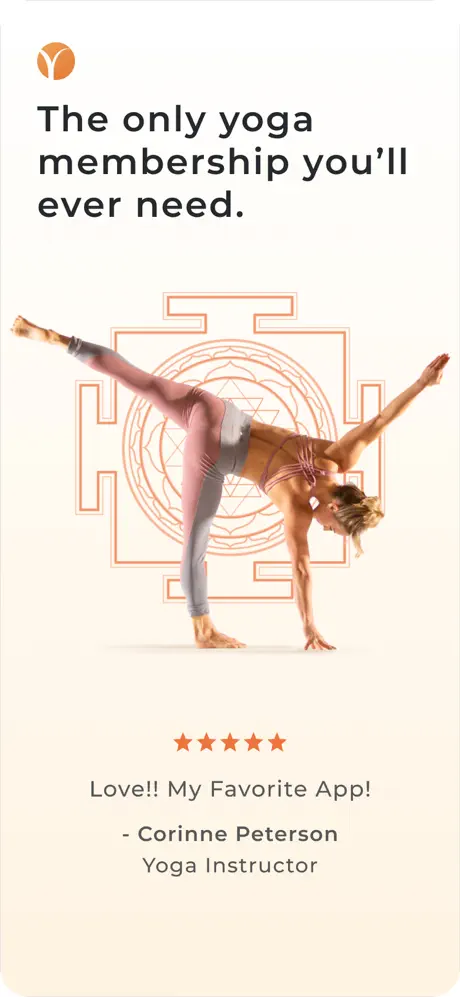
#7. Yoga Download
App Store Ranking: 4.9
Rating Score: 33 out of 45
Overview
Similar to the rest of our apps in the top 10, Yoga Download has a solid library of classes overall. They also offer a ton of free classes available both on their app and YouTube channel. There are programs designed around specific goals or outcomes, and some good content for yogis just getting started as well. The app’s interface feels like it was built more for a web browser than as a mobile app, but there’s some great filtering options and a ton of different styles of yoga covering formats like Iyengar, Jivamukti, Kundalini, Power Yoga, Vinyasa, Prenatal, etc.
Free Content: Yes, over 200 free classes
Live Classes: No
Beginner Programs & Guidance: Yes
Music: No custom control
Class Customization/Filtering: Yes
Fitness Tracking: No
Goal-Oriented Content: Yes
Pose Tutorials: No
Educational Programs: No
Ads: No ads
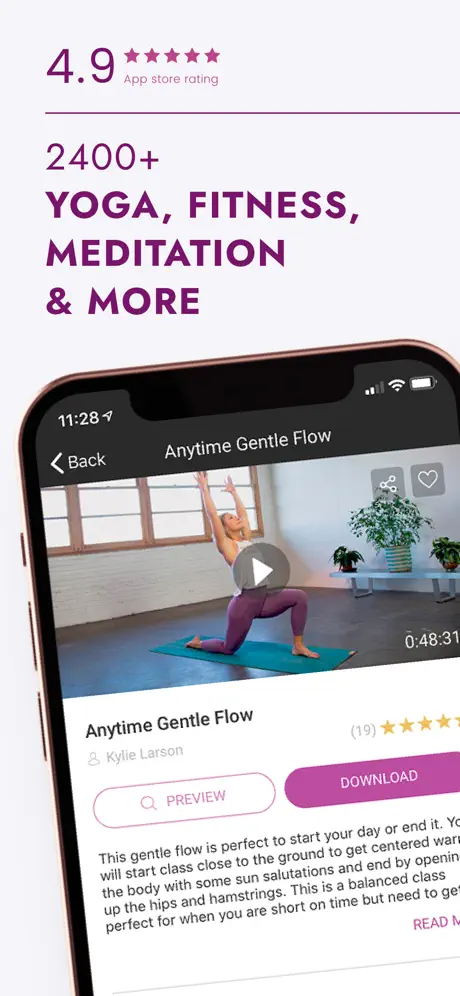
#8. Daily Yoga: Yoga for Fitness
App Store Ranking: 4.7
Rating Score: 33 out of 45
Overview
Daily Yoga has a lot of different modalities and a great pose library with video tutorials and well-designed descriptions. There are programs designed around specific goals like back and neck relief or stress relief. In addition to classes, there’s a community element and eBooks available for an extra fee.
Free Content: 1 class available for free, then a subscription is required.
Live Classes: No
Beginner Programs & Guidance: Yes
Music: Yes, there is music and the volume can be customized separate from the instructor’s voice.
Class Customization/Filtering: Yes
Fitness Tracking: Yes
Goal-Oriented Content: Yes
Pose Tutorials: Yes
Educational Programs: No
Ads: No ads
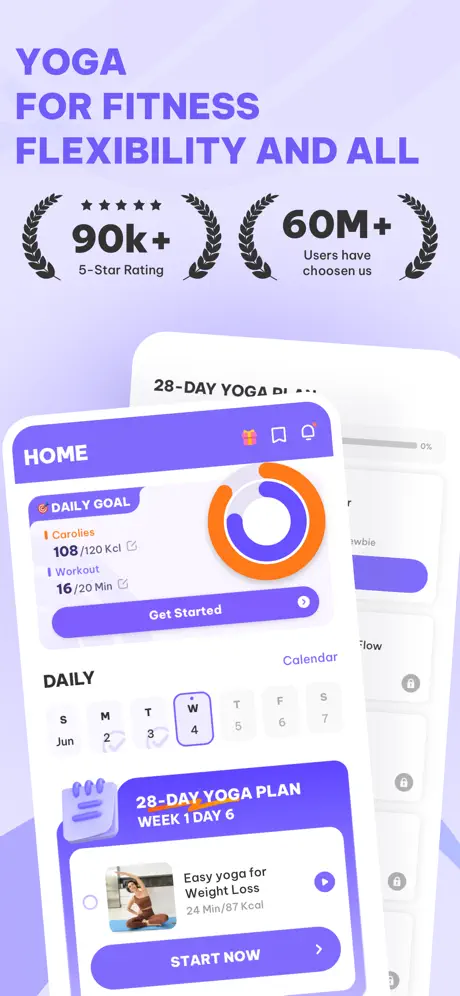
#9. Simply Yoga: Workouts, Classes
App Store Ranking: 4.7
Rating Score: 34 out of 45
Overview
Simply Yoga is another popular yoga app that allows you to design custom routines or follow guided practices. There’s functionality within the app to schedule reminders for yourself and track the weekly progress of how many hours/minutes you’ve worked out. Unfortunately, the content library seems rather limited compared to other apps ranking in the top 10 and some of the classes are just videos of people moving through poses with a voiceover. There is another app under the Simply Yoga brand marketed as a ‘premium’ version which was not tested within this evaluation since it isn’t free to download.
Free Content: Yes
Live Classes: No
Beginner Programs & Guidance: Yes
Music: No custom music options
Class Customization/Filtering: No
Fitness Tracking: Yes
Goal-Oriented Content: Limited
Pose Tutorials: Yes
Educational Programs: No
Ads: No Ads
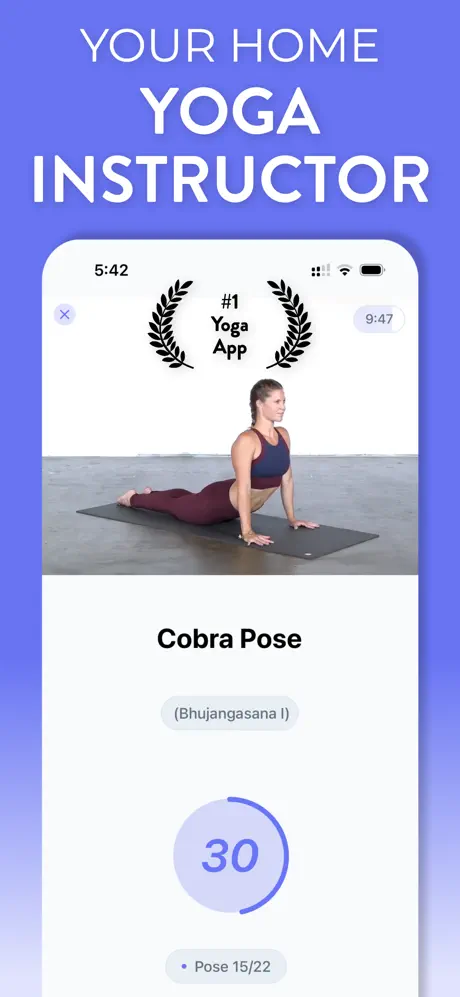
#10. YogaFit | Yoga for Beginners
App Store Ranking: 4.8
Rating Score: 32 out of 45
Overview
Free Content: Conflicting information – there appear to be free classes available but lots of reviewers saying they have to subscribe in order to access content after a certain period.
Live Classes: No
Beginner Programs & Guidance: Yes
Music: Yes, there’s music and it can be customized separate to the instructor’s voice.
Class Customization/Filtering: Unable to find a place to combine different filters
Fitness Tracking: Yes
Goal-Oriented Content: Yes
Pose Tutorials: Yes
Educational Programs: No
Ads: No Ads
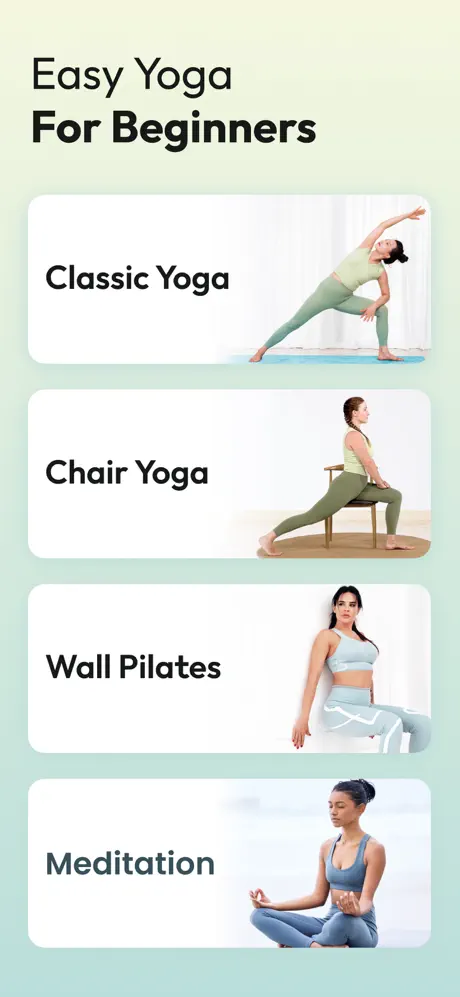
#11. Asana Rebel
App Store Ranking: 4.7
Rating Score: 30 out of 45
Overview
Free Content: Free download only
Live Classes: No
Beginner Programs & Guidance: Yes
Music: Yes, there’s music and it can be customized
Class Customization/Filtering: No
Fitness Tracking: Yes
Goal-Oriented Content: Yes
Pose Tutorials: No
Educational Programs: No
Ads: No ads
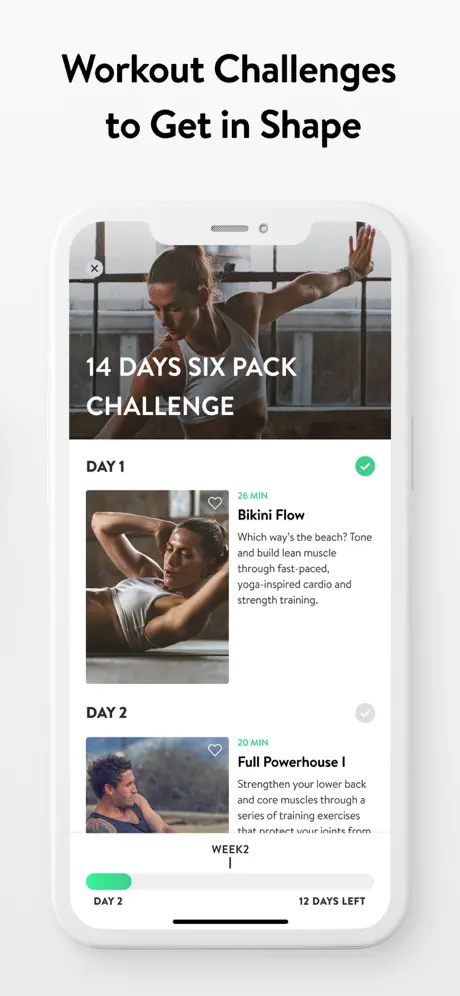
#12. DoYogaWithMe
App Store Ranking: 4.7
Rating Score: 31 out of 45
Overview
Free Content: Over 200 free classes
Live Classes: Limited, subscribers get 25% off livestream events but there doesn’t appear to be a place within the interface for live events or classes.
Beginner Programs & Guidance: Yes
Music: No music
Class Customization/Filtering: No
Fitness Tracking: No
Goal-Oriented Content: Yes
Pose Tutorials: Yes
Educational Programs: No
Ads: I didn’t see ads, however their subscription is marketed as ‘ad-free’ which implies there are ads for free users
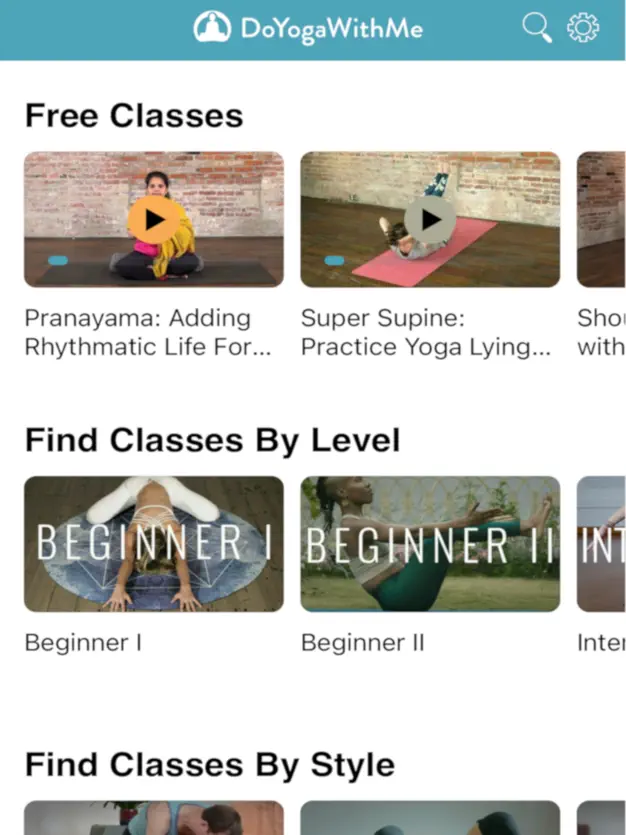
#13. Yoga-Go
App Store Ranking: 4.6
Rating Score: 28 out of 45
Overview
Free Content: Free download only
Live Classes: No
Beginner Programs & Guidance: No
Music: Yes, with customization
Class Customization/Filtering: Yes
Fitness Tracking: No
Goal-Oriented Content: Yes
Pose Tutorials: No
Educational Programs: No
Ads: No ads
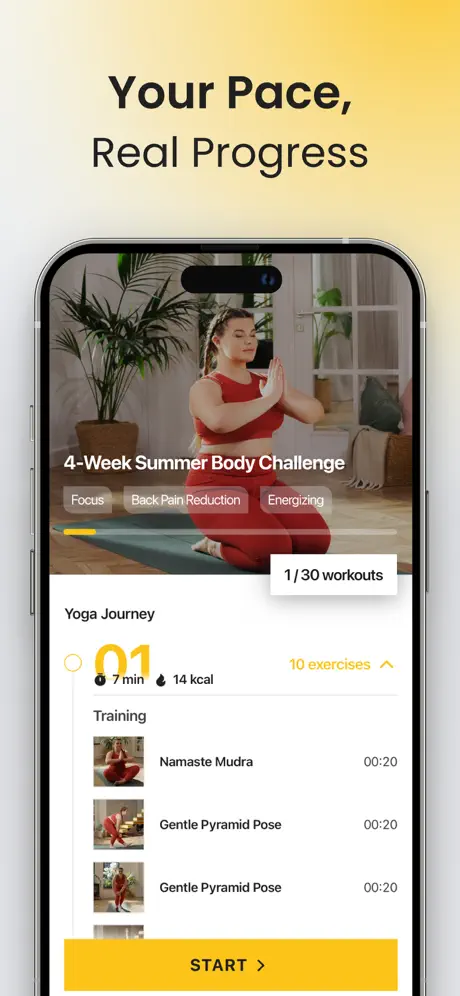
#14. YouAligned
App Store Ranking: 4.6
Rating Score: 28 out of 45
Overview
Free Content: Under 20 free classes in their ‘free for all’ section
Live Classes: Limited, only once a month
Beginner Programs & Guidance: No
Music: No
Class Customization/Filtering: Yes
Fitness Tracking: No
Goal-Oriented Content: Yes
Pose Tutorials: No
Educational Programs: No
Ads: No Ads
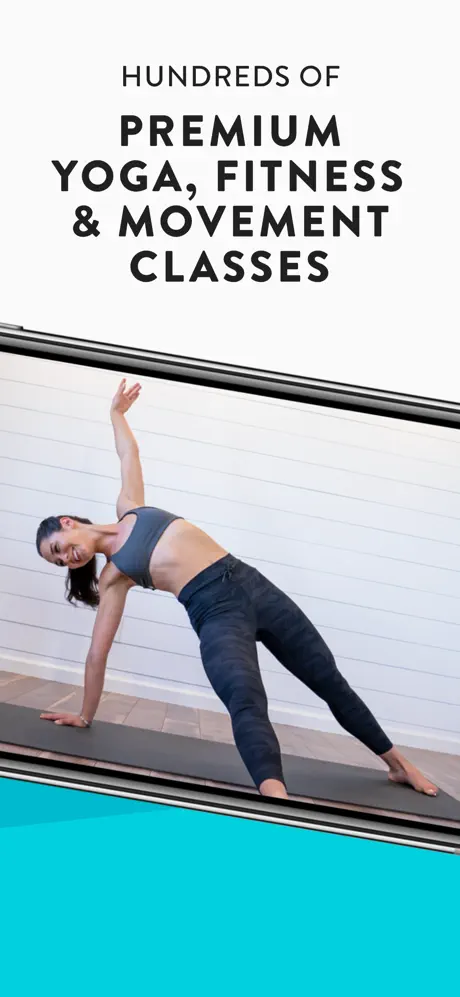
#15. Yoga Studio: Stretch on the go
App Store Ranking: 4.5
Rating Score: 28 out of 45
Overview
Free Content: Download only
Live Classes: No
Beginner Programs & Guidance: Yes
Music: No customization
Class Customization/Filtering: Yes
Fitness Tracking: Yes
Goal-Oriented Content: Yes
Pose Tutorials: Yes
Educational Programs: No
Ads: No ads
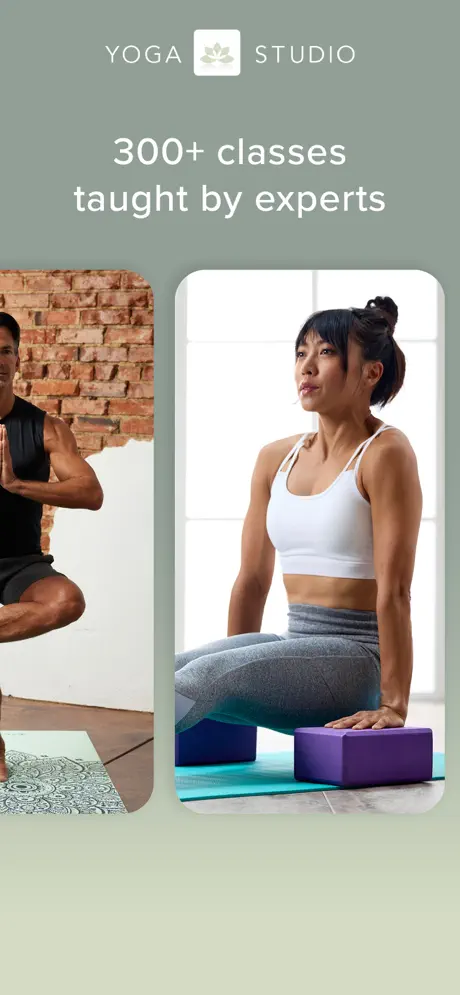
#16. BetterMe
App Store Ranking: 4.7
Rating Score: 26 out of 45
Overview
Free Content: Free download only
Live Classes: No, but coaching available
Beginner Programs & Guidance: No
Music: Limited – you can turn it on or off.
Class Customization/Filtering: No
Fitness Tracking: Yes
Goal-Oriented Content: Yes
Pose Tutorials: Yes
Educational Programs: No
Ads: No ads
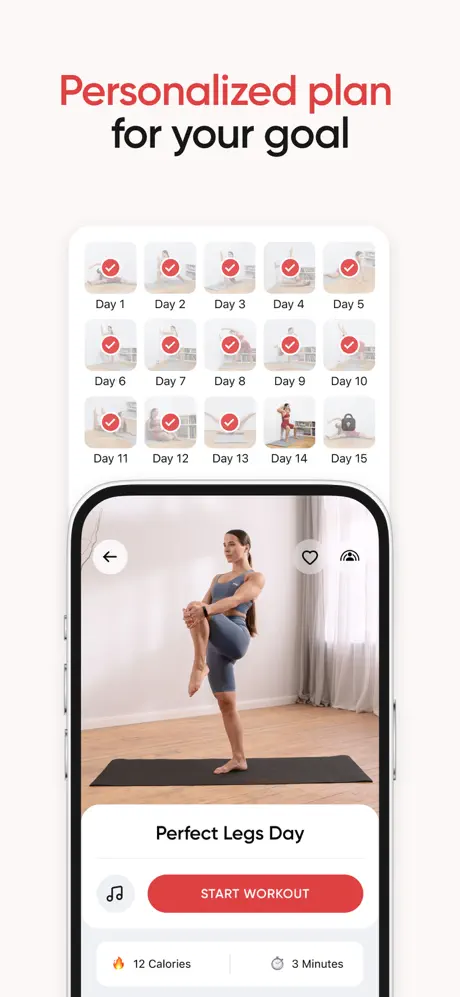
#17. Bend
App Store Ranking: 4.8
Rating Score: 26 out of 45
Overview
Free Content: No classes, only free sequences or routines with a timer
Live Classes: No
Beginner Programs & Guidance: No
Music: No music
Class Customization/Filtering: Yes, you can create custom routines based on your interests or needs
Fitness Tracking: Yes
Goal-Oriented Content: Yes
Pose Tutorials: No
Educational Programs: No
Ads: No ads
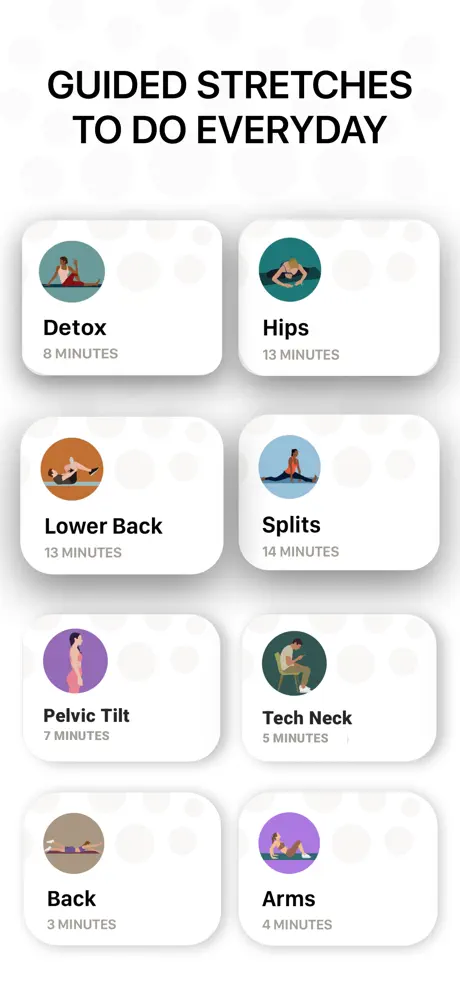
#18. Down Dog App
App Store Ranking: 4.9
Rating Score: 26 of 45
Overview
Free Content: No free content available although there used to be. Classes are a computer generated voiceover with a video of somebody moving through a sequence rather than instructor guided classes.
Live Classes: No
Beginner Programs & Guidance: No
Music: Yes, lots of customization options here
Class Customization/Filtering: Yes
Fitness Tracking: Yes
Goal-Oriented Content: No – only body focus areas. No goals like ‘stress relief’ or ‘weight loss’ available within this yoga app.
Pose Tutorials: No
Educational Programs: No
Ads: No ads
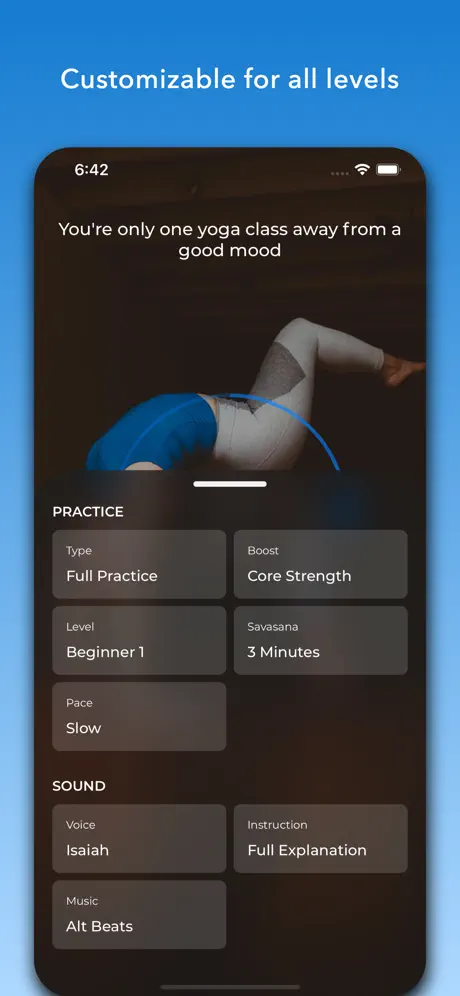
#19. 5 Minute Yoga Workouts
App Store Ranking: 4.7
Rating Score: 25 out of 45
Overview
Free Content: Download only
Live Classes: No
Beginner Programs & Guidance: No
Music: Yes, with customization
Class Customization/Filtering: No
Fitness Tracking: Yes
Goal-Oriented Content: No
Pose Tutorials: Yes
Educational Programs: No
Ads: No ads
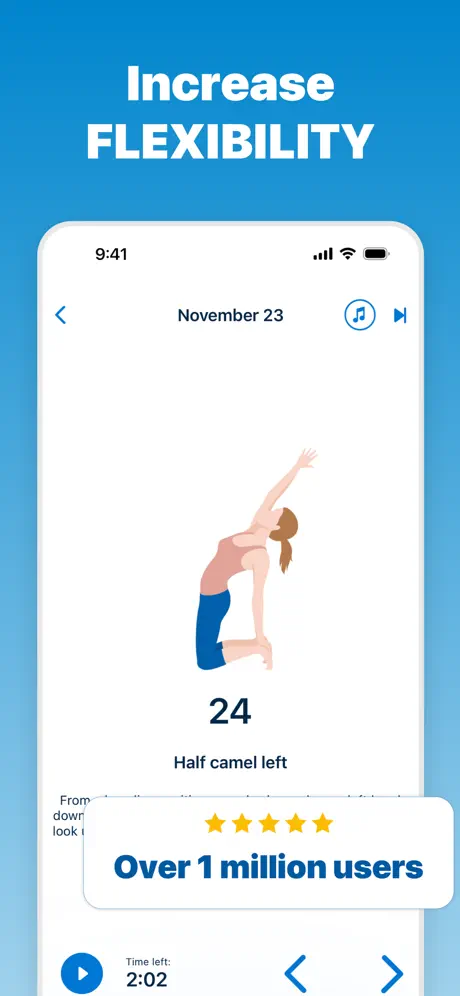
#20. CorePower Yoga On-Demand
App Store Ranking: 4.6
Rating Score: 24 out of 45
Overview
Free Content: No
Live Classes: No
Beginner Programs & Guidance: No
Music: No customization
Class Customization/Filtering: Search only
Fitness Tracking: No
Goal-Oriented Content: No
Pose Tutorials: No
Educational Programs: No
Ads: No ads
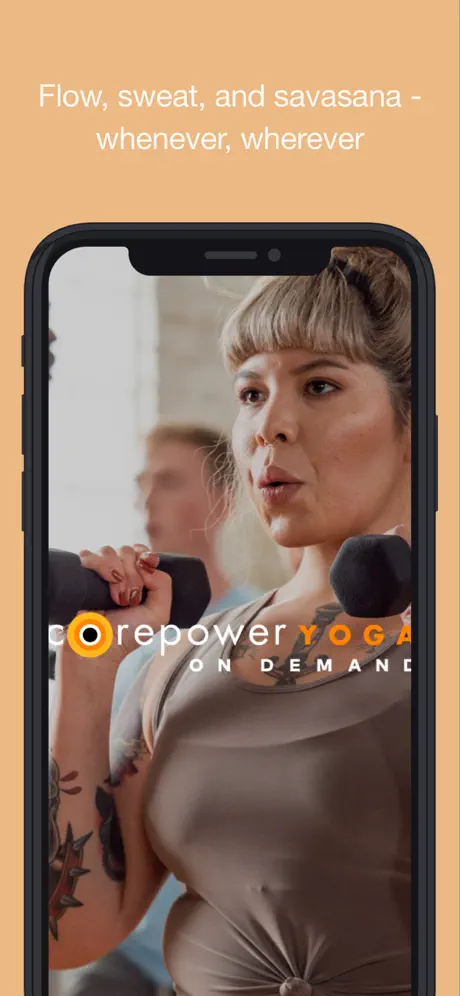
That’s your exhaustive & detailed list of the 20 best free yoga apps. Hopefully you’ve gotten a good sense of what’s available and how different apps serve different needs. Many free apps strictly have animations or timed sequences of poses, while others have guided classes with varying levels of video quality. Finding the best yoga membership can be daunting with so many choices, so hopefully this list can be a helpful guide to find one that’s right for you!
Frequently asked questions
What do I need to practice yoga at home with an app or online classes?
Realistically you don’t need anything to get started practicing yoga, however a yoga mat and two yoga blocks are a good starting point! Most mobile apps will connect to your TV, computer or tablet so you can stream videos on a larger screen.
What's the best free yoga app?
With over 200 free classes and tutorials, YogaRenew is the best free yoga app hands down. In addition to the free classes & tutorials, there are educational courses, goal-oriented series and daily live classes available. You can download classes for viewing offline, connect to Apple Health or Google Fit and discover content based on your goals or objectives.
What’s the best yoga app for women?
Obe Fitness is the best yoga app targeting women with tracking specific to areas like physical or mental health, and cycle tracking.
What yoga app is the best for live classes?
Glo yoga has a ton of live class options and is a great app if you’re looking for live sessions from reputable instructors.
What's the best yoga app for scenic views and videos?
Alo moves is the best app if you’re looking to practice with some stunning backgrounds in the video.
What’s the best app for AI generated yoga sequences?
DownDog has a ton of customizations and is great for computer generated sequences and classes.
What's the best yoga app for beginners?
YogaRenew is the best yoga app for beginners. It provides beginner focused series and educational programs with clear guidance across every facet of yoga. It’s a great free yoga app for beginners looking to get started.
What yoga app is the best for advanced yogis?
Yoga International is the best app for advanced yogis looking to deepen their practice with training and educational content.
What is the best free yoga app for full length classes?
Once again, YogaRenew is the best free yoga app and provides a ton of full length classes free.
